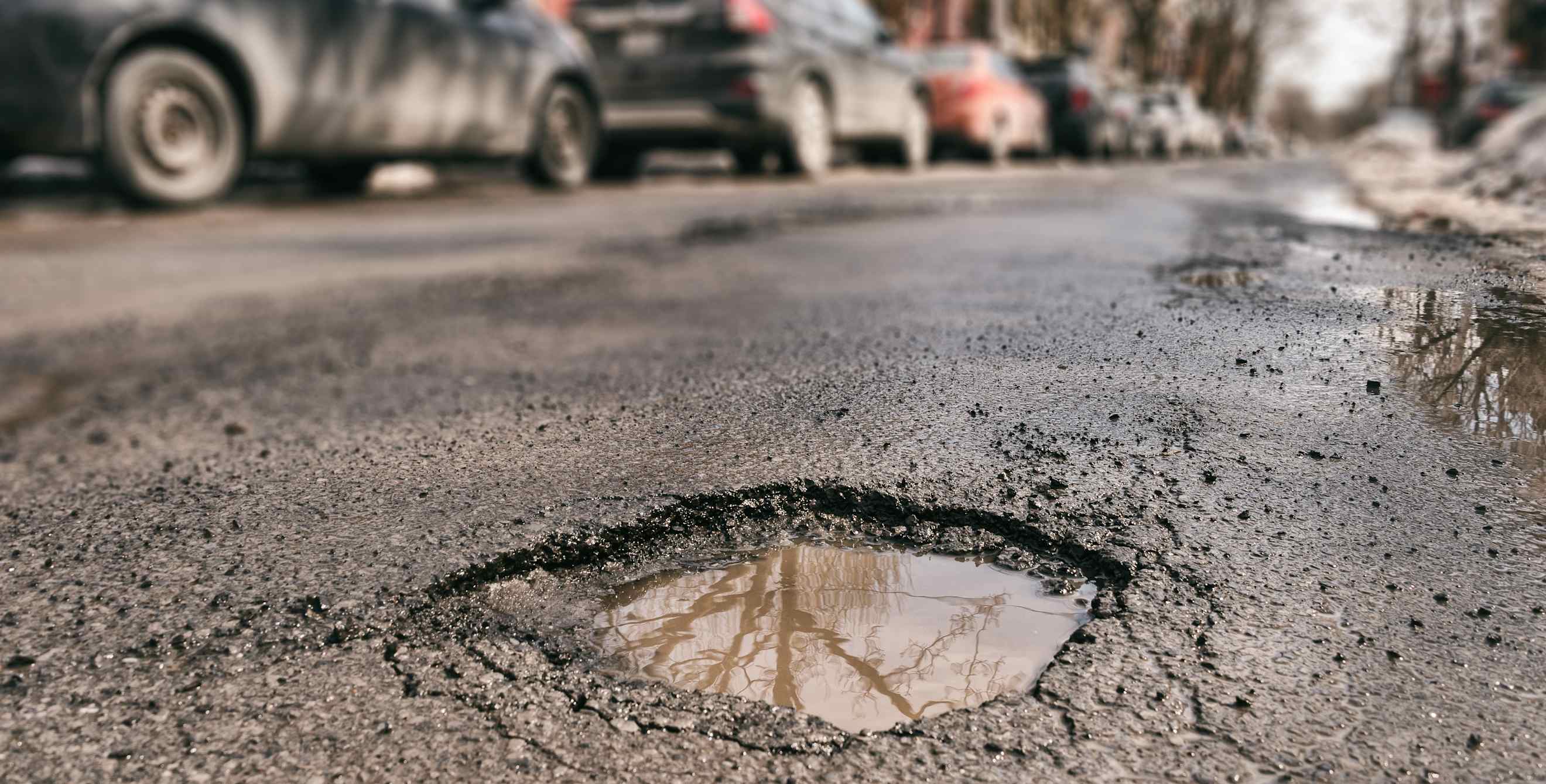
How to Avoid Pothole Damage
And what to do if you hit one.

Hitting a pothole while driving can be a jarring experience. But it's not just your nerves that take a hit—your car can too. Damage from potholes cost drivers a whopping $26.5 billion dollars in 2021, according to recent AAA survey data. What’s worse is that the survey found that one in 10 drivers who hit a pothole experienced sufficient enough damage to their vehicle that it needed to be repaired. The average cost? Close to $600. Here’s how to safely avoid potholes and their repercussions.
How Potholes Can Damage Your Car
Your tires take the brunt of the hit when coming in contact with a pothole. A pothole can pierce your tire, leading to a flat or blowout. “Tire and wheel damage are the most common,” says Travis Mock, vice president at Car Care Arizona, AAA Automotive Repair Centers. “In addition, suspension components could also become damaged. If your vehicle pulls after hitting a pothole, a wheel alignment may be in order.”
There are other symptoms of damage to be aware of that can be serious and something you shouldn’t overlook. Potholes can cause the wheels to bend or crack. “This can affect the car's ability to roll smoothly and can also cause vibrations in the cabin,” says James Archer of Autos Ninja, a mechanic with over 10 years of experience. “Potholes can cause damage to the car's undercarriage, such as to the exhaust system, steering and suspension components, and even the transmission and differential.”
Given the number of ways that a pothole can harm your vehicle, your best bet is to avoid them altogether.
How to Safely Avoid Damaging Potholes
When driving it’s always important to be aware of what’s going on around you, that includes looking out for potholes that may sneak up on you. Avoid all driving distractions so you can focus on what's in front of you and in your surrounding environment.
Keep a safe distance, at least three to six seconds between you and other cars as well. This gives you a better chance of seeing potholes in advance and responding accordingly. Properly inflating your tires can also help minimize or prevent damage from potholes as well.
Finally, check your weather app before heading out on the road. “Potholes are more likely to form during wet or freezing weather, so checking the forecast can help you plan your route and drive accordingly,” explains Archer.
Puddles may also be hiding more than just a surprising amount of water, so it’s best to avoid driving through them when possible.

What to Do if You Hit a Pothole
Sometimes you may not be able to react quickly enough or be able to safely maneuver around a pothole, and driving over it may be inevitable. But there are things you can do to ride it out safely and securely in a way that minimizes the potential for damage.
“Keep a firm grip on the steering wheel in order to maintain control of the vehicle,” says Mock. “Also, do not swerve into another lane as this could cause an accident [if you don’t see] another vehicle. If you notice a pothole, slow down before you hit the pothole if you cannot avoid it.”
Once you’ve hit a pothole, it’s important to assess if there’s been any damage to your tires, wheels, or other parts of your car. Listen for any sounds and feel for any sensations out of the ordinary, such as the steering wheel pulling to the left or the right or vibrations.
“If, based on the way the car drives or sounds, you think a tire is flat or the suspension is damaged, look for a safe place to stop as soon as practical,” says Richard Reina, product training director at CARiD.com. “If the tire is flat, install the spare tire. If you suspect that the car cannot be driven, you may need to call for roadside assistance.”
Aside from your tires, make sure your suspension systems are working properly and that there are no odd sounds or sensations, like vibrating. If there are issues of concern, get your car checked out by a trusted mechanic who can make sure the vehicle is fixed and safe to drive.
Save 10% on labor, up to $75, and get an extended warranty on parts and labor.*